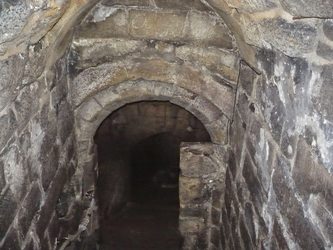Richard II had inherited the throne of England at the age of ten. Four years later, in 1381, he successfully ended the Peasant Revolt, but followed this achievement with extravagances and favouritism, all of which alienated a number of high ranking lords.
One famous incident, which you could argue was the beginning of the end for Richard, was his actions when dealing with the famous duel (it didn't take place) between Henry of Bolingbroke and Thomas Mowbray. Before it even began, Richard stepped in banishing Bolingbroke and exiling Mowbray. It was during his banishment that Bolingbroke's father died and Richard deprived him of the right to inherit his fathers land, much angered, Henry returned to England and landed atRavenspur in the summer of 1399.
At Flint Castle, Henry bullied Richard into abdication on the promise not to have him killed. How clever he was, Henry knew that with throne of England unoccupied he could claimed the throne of a deposed king and therefore he was not guilty of usurpation with malice aforethought.
By the February of 1400 Richard was a prisoner at Pontefract Castle.
According to John Leyland, the Tudor antiquarian, Pontefract's castle had, at one time, a two walled outer bailey, 'six roundells, three bigge and three small' that made up the the castle’s keep which measured 63-64 feet in diameter that had within one of them a "very frightful small dungeon.”
And so Henry Bolingbroke became Henry IV of England, and the House of Lancaster was born, but the problem of succession never went away and we all know what happened next.



 RSS Feed
RSS Feed
